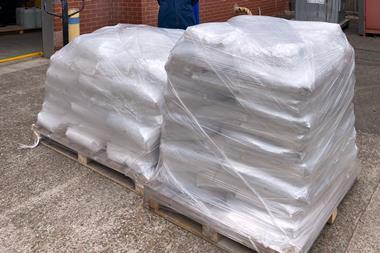Information exchange forums that form part of Reach chemical legislation are not functioning effectively
Data sharing forums crucial to the success of the Reach chemicals legislation are not functioning effectively, with lack of communication, IT inadequacies and the complexity of implementing the scheme blamed for the lack of progress.
Around 65,000 companies are estimated to have provided basic pre-registration data on the identity, production and importation of 143,000 substances to the European Chemicals Agency (ECHA), responsible for running Reach. Altogether, 2.7 million pre-registrations were made by the December 2008 deadline - around 15 times more than originally estimated.
After struggling with overloaded IT systems in the deluge of pre-registrations, ECHA is now having trouble with next stage of the Reach process, in which groups of pre-registrants form ’substance information exchange forums’ (SIEFs) to collect safety data for the registration dossier on each chemical.
The forums are said to be crucial to the success of Reach as they will help companies find safety data needed for registration, as well as sharing the cost of gathering the information.
The SIEFs need to begin operating quickly - the deadline for the registration of around a third of all substances subject to Reach is the end of next year. This covers chemicals with an annual output of over 1,000 tonnes and all those classified as substances of high concern due to their potential danger to human health and the environment.
ECHA, however, admits that many of these forums are not yet functioning effectively. This is despite pre-registrants of each substance being automatically supplied with contact details of other companies pre-registering similar chemicals by the agency’s REACH-IT computer system at the beginning of the year.
Lack of communication between prospective SIEF members has proved to be a major problem. This is partly because Reach software programmes had to be revamped due to the unanticipated flood of pre-registrations; original European Commission estimates had forecast that 30,000 substances above the Reach threshold of one tonne or more produced or imported annually would have to be registered.
’The underestimate of the pre-registrations was so enormous that IT systems designed for a much smaller number of registrations would not have been able to cope when the preparations for drawing up registration dossiers started,’ says Peter Newport, director of the Chemical Business Association (CBA), Crewe, England. ’Software systems are still having to be enhanced in order to allow SIEF members to communicate effectively.’
ECHA itself has had to expand its own REACH-IT system to handle a higher number of SIEFs than expected.
While grappling with inadequate software systems, companies have also struggled with the complexity of establishing, running and participating in a SIEF.
’SIEFs present a whole new landscape for many people in the chemical industry,’ says Mike Penman of Penman Consulting, Tervuren, Belgium, which specialises in toxicology and environmental and safety regulations. ’R&D managers and regulatory affairs directors are not used to the process of communicating with their counterparts in other companies on an issue like joint Reach registrations.’
After volunteering to establish a SIEF, it appears individuals have been backtracking because of the difficulty of setting up a forum, while only a small minority of SIEFs have lead registrants, responsible for drawing up joint dossiers.
Erwin Annys, Reach and chemicals policy director at the European Chemical Industry Council (Cefic), the chemical industry’s trade association, says some of those responsible for establishing the forums are difficult to contact and are moving slowly. ’They are taking a very long time to find out what role each pre-registrant wants to play in the SIEF, which is very important if the SIEF is to work well.’
The groups best placed to deal efficiently with the complicated procedure of sharing data and drawing up joint dossiers are consortia of chemical companies, mostly relatively large operators, formed specifically to facilitate compliance with Reach. They cover bulk sectors like petrochemicals and commodity inorganics, so are able to run a large number of SIEFs within a single management system.
’We are well advanced in the creation of dossiers with a few already virtually completed,’ says Penman, whose consultancy manages two petrochemicals consortia, one with 137 SIEFs covering lower olefins and aromatics.
However, among the many thousands of chemical producers and importers outside consortia there are already calls for extensions to the registration deadlines. ’We think it would be right to put back the deadlines,’ says Newport, whose association represents mainly small and medium size enterprises (SMEs). ’The Reach principles on data sharing are not SME friendly.’
However, extending the deadlines is highly unlikely due to lack of time. It would require an amendment to the Reach legislation to be supported by the European Parliament and the Council of Ministers, representing the EU’s member governments.
’Although the timing of deadlines is extremely stringent and challenging, we ask our companies to do the necessary to be ready in time,’ says Annys.
Sean Milmo






No comments yet